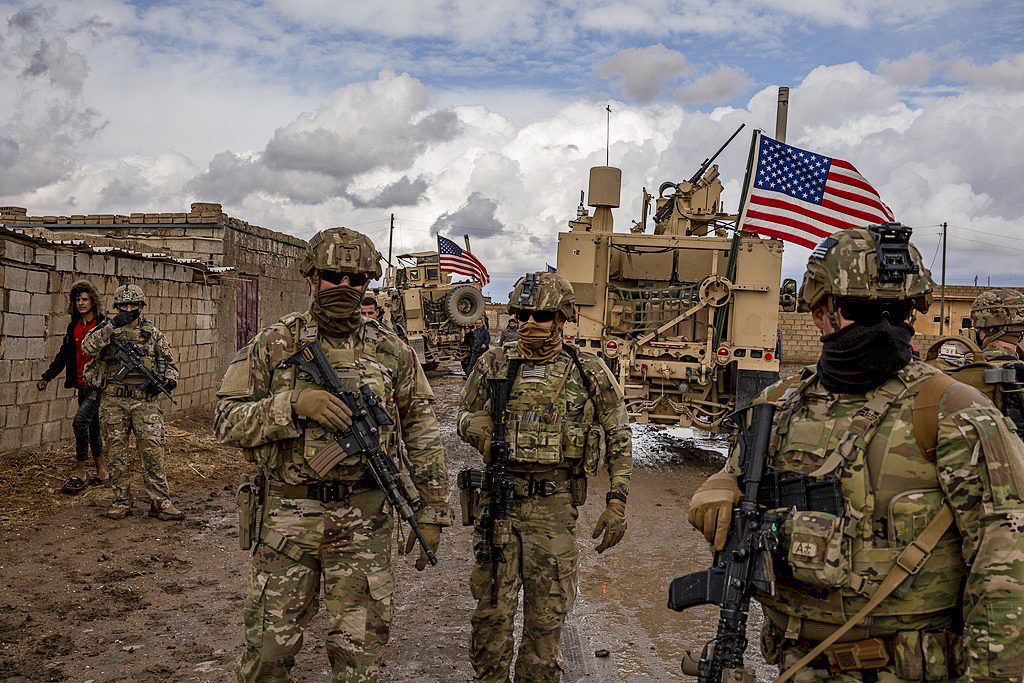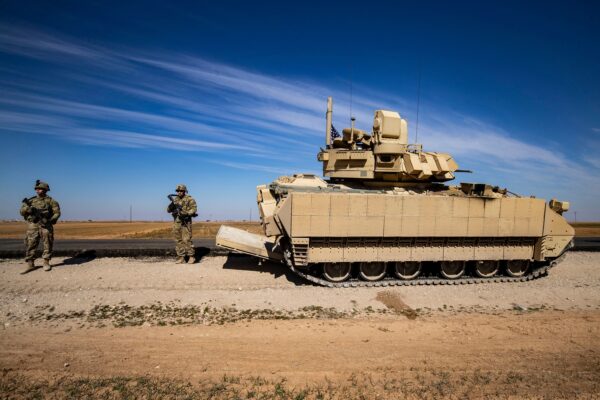


The U.S. military presence in Syria is coming under increasing pressure amid mounting volatility in the region and geopolitical realignments.
On March 24, the U.S. vowed to protect military assets and personnel deployed in Syria following back-to-back attacks on its bases.
“We’re going to work to protect our people and our facilities as best we can,” White House National Security spokesman John Kirby said in televised comments.
In reference to the Syrian theater, he added: “It’s a dangerous environment.”
Earlier the same day, a U.S. base in northeastern Syria came under a missile attack, according to U.S. officials.
As of the time of writing, it was still unclear who was behind the attack, which Kirby said did not result in any casualties.
One day earlier, a U.S. base near Syria’s northeastern city of Hasakah was attacked by an aerial drone, which U.S. defense officials claimed was “of Iranian origin.”
According to the Pentagon, that attack left a military contractor dead and six servicemen injured.
The United States responded by striking positions in eastern Syria associated with Iran’s Revolutionary Guards Corps, the Defense Department said in a statement.
The UK-based Syrian Observatory for Human Rights later claimed that the strikes had killed 11 Iranian-backed fighters in three separate areas of eastern Syria.
However, sources quoted by the Iranian media said that no Iranians were killed in the strikes.
The Epoch Times was unable to verify either of the assertions.
War-torn Syria remains subject to frequent extra-territorial attacks.
On March 22, Israel–viewed as a key U.S. ally in the region–carried out an airstrike that targeted northwestern Syria’s Aleppo airport.
According to Syrian officials, the Israeli strike caused “significant material damage” and temporarily suspended the airport’s operations.
It was Israel’s third attack on the airport within the past six months.
Israel carries out frequent attacks on Syrian territory. Israeli officials claim the attacks target Iranian military assets deployed in the country.
Since Israel’s establishment in 1948, it has fought three major wars with Syria. The two countries have never had diplomatic relations and technically remain in a state of war.
The U.S. continues to maintain a military presence in Syria, consisting of roughly 900 troops, with the stated aim of preventing the resurgence of the ISIS terrorist group.
Said to be an offshoot of Al-Qaeda, ISIS made international headlines in the years following 2014 when it overran large swaths of Syria and Iraq.
By 2019, the terrorist group had been largely eradicated, prompting then-President Donald Trump to withdraw most U.S. troops from Syria.
However, several hundred troops remained in the country, concentrated mainly in Syria’s northeast and northwest.
Damascus, for its part, views the continued U.S. military presence as an illegal “occupation.”
It’s a view shared by Iran and Russia, both of which have kept military forces in Syria–albeit at the latter’s invitation–since 2015.
But it’s also a view shared by NATO member Turkey, which for over a decade has remained a bitter foe of Syrian President Bashar al-Assad.
Turkey opposes Washington’s support for the Syrian Democratic Forces (SDF), a coalition of Syrian groups cobbled together in 2015 with the ostensible aim of fighting ISIS.
The SDF’s main component is the YPG, a Kurdish militant group that Ankara views as a terrorist group.
The YPG is the Syrian offshoot of the Kurdistan Workers Party (PKK), which has carried out numerous attacks on Turkish targets—civilian and military—throughout its 45-year history.
Backed by the United States, the SDF now controls much of northeastern Syria, which has become a de facto autonomous enclave where the Syrian government exerts little authority.
Increasingly frustrated by U.S. support for the YPG, Ankara has recently taken steps—with Russian encouragement—to reconcile with Damascus.
In December, the Turkish and Syrian defense ministers held a landmark meeting in Moscow.
The meeting was widely expected to pave the way for the full normalization of ties between the two countries after a decade of mutual hostility.
On March 4, U.S. Army General Mark Milley, chairman of the Joint Chiefs of Staff, visited troops deployed in Syria to review security protocols and assess efforts to combat ISIS.
During the visit, Milley said the continued U.S. presence in Syria was worth the risks involved.
“The enduring defeat of ISIS and continuing to support our friends and allies in the region … are important tasks that can be done,” he told reporters.
Damascus called Milley’s visit a “flagrant violation” of Syria’s sovereignty, while Ankara summoned the U.S. ambassador to express its displeasure with the move.
Four days later, Congressman Matt Gaetz (R-Fla.) proposed legislation calling for the full withdrawal of U.S. troops from Syria.
The bill was soundly defeated, with 321 lawmakers voting against it and 103 voting in favor.
“Withdrawal of this legal, authorized U.S. troop deployment must be based on the total defeat of ISIS,” Michael McCaul (R-Texas), head of the House Foreign Affairs Committee, said after the vote.
Reuters contributed to this report.


